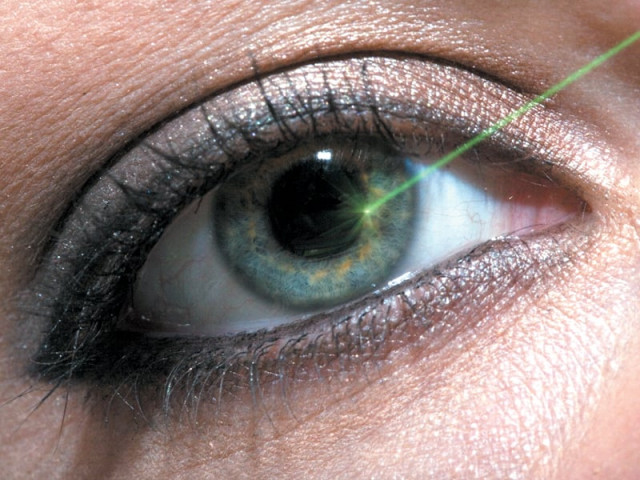
Tired of groping for your glasses every morning and placing your lenses in their solution every night before turning in? Well you are one of many looking to find an alternative option. The common vision problems (or refractive errors) people experience include short sightedness, long sightedness and astigmatism. These problems are generally dependent on the shape of the eye and the transparent curtain in front of it called the cornea.
Now a sureshot way to get rid of specs and contact lenses has been found. To break it down to brass tacks, the procedure in many ways defies the typical picture of a surgery. First of all, there are lasers involved, as evident by the name — laser refractive eye surgery. Second, the ophthalmologists work in a bloodless field at a microscopic level. And this last bit may sound freaky, but the patient is awake during the process. The eye is propped open, a flap of cornea is raised and then laser machinery is used to work under it, altering the shape in order to improve the vision. Both eyes can be treated the same day, with the procedure itself taking only a few minutes. The patient can be sent home with a dressing, topical pain killers, antibiotics, steroids, lubricants and a set of precautions.
There will be mild discomfort. The vision will start clearing up within the day. At home, take care not to rub your eyes too much. Sleep with protective goggles and wear shades when going out for a few days. Take your eye drops as prescribed. And schedule a follow up visit the next day, a week later and then give an interval of a few months before seeing the eye doctor again.
Some patients almost immediately notice the difference in their vision while for others it can take up to six months to kick in. This does not mean that vision their is going to be 20/20 without glasses. Generally, patients who have undergone this procedure are happy with the results. A number of celebs including Nicole Kidman and Brad Pitt have successfully undergone this.
However, in addition to this lifestyle change costing more than around Rs50, 000, one also risks complications undergoing laser refractive surgery. There can be over-correction or under-correction. Repeat treatments are frequent. The eye can get infected and if the cornea scars and turns opaque, vision might even be worse than it was prior to surgery. Dry eyes are a significant problem, which necessitate artificial tears or lubricants to keep the eye from reddening, irritating and hurting.
Few ways of guarding against complications is to choose a skilled ophthalmologist running a well-equipped place. Further, a thorough history of the patient is also important including any medical conditions, eye problems, and medications being taken. The type of laser used also has a huge bearing on how well a patient does in recovery. Lastly, age is also important as the vision is in a dynamic state till one hits their twenties. Looking at the entire picture, one can make an informed decision to go ahead with the procedure or not, keeping in mind that though complications might be few and uncommon, the slim chance of them happening should still be considered.
Published in The Express Tribune, December 17th, 2011.





1726054615-0/OpenAI-(2)1726054615-0-270x192.webp)











COMMENTS
Comments are moderated and generally will be posted if they are on-topic and not abusive.
For more information, please see our Comments FAQ